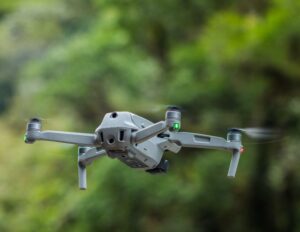
Exploring the Feasibility of LTE Networks for Beyond Visual Line of Sight (BVLOS) Drone Connectivity
Elsight is a DRONELIFE sponsor.
In a recent presentation at the SESAR 3 Joint Undertaking Innovation Days, Timo Kasurinen from the North European Logistics Institute at South-Eastern Finland University of Applied Sciences introduced a paper titled “LTE Mobile Network Technical Feasibility for Unmanned Aerial Vehicle BVLOS Operations in a Rural Test Area.” The paper delves into the potential of Long Term Evolution (LTE) technology for facilitating beyond visual line of sight (BVLOS) operations of unmanned aerial vehicles (UAVs) in a rural setting.
The study aimed to address challenges such as aerial coverage, interference elimination, and network latency associated with using mobile networks for Command and Control (C2) links in drone operations. Kasurinen’s research focused on a rural test area in South-Eastern Finland, utilizing commercial cellular operators and Elsight’s Halo UAV connectivity system for BVLOS flights.
During the BVLOS flights, the paper showcased the reliability of Elsight‘s Halo OEM Platform, which supports four parallel LTE connections using three SIM cards from various network operators. The platform demonstrated stable connections, collecting crucial data on the drone’s location and connection parameters.
Key findings from the study include the effectiveness of LTE networks for implementing low-capacity C2 links, especially with sufficient field strength. The research highlighted the importance of multiple parallel connections in areas with weak LTE coverage, emphasizing the potential of commercial cellular networks for BVLOS operations.
The paper concludes that if certain conditions, such as ensuring coverage from multiple LTE network operators and using terminals supporting several simultaneous connections, are met, mobile phone networks could be widely accepted for low-capacity C2 links in UAV operations.
The research was conducted under the regulatory framework for BVLOS operations in Europe, where special category licenses are required for such operations, and the study aims to contribute to the understanding and acceptance of mobile phone networks in UAV operations. The work was supported by Elsight’s Halo connectivity platform and funded by the Academy of Finland and the European Regional Development Fund.
Read more:
- Staying Connected, Even During an Outage: Sphere Drones; HubX and Elsight Keep Flying During Optus Service Failure
- Elsight and DroneUp: Connectivity to Achieve “Six Nines” Availability
- Spright Chooses Elsight’s Halo to Ensure Connectivity for Critical Missions

Miriam McNabb is the Editor-in-Chief of DRONELIFE and CEO of JobForDrones, a professional drone services marketplace, and a fascinated observer of the emerging drone industry and the regulatory environment for drones. Miriam has penned over 3,000 articles focused on the commercial drone space and is an international speaker and recognized figure in the industry. Miriam has a degree from the University of Chicago and over 20 years of experience in high tech sales and marketing for new technologies.
For drone industry consulting or writing, Email Miriam.
TWITTER:@spaldingbarker
Subscribe to DroneLife here.